Caps and cartridges of Boxer and Berdan
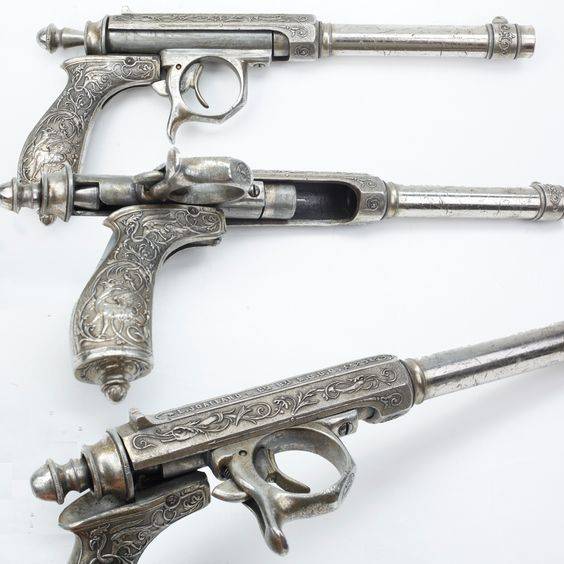
Amazing possibilities for the creators of weapons opened unitary ammunition. Well, how else could this gun design some Needle? Just look: the cocking handle is ... the firing mechanism itself, along with the trigger guard bracket. You turn it to the right, pull it back, insert the cartridge from the bottom into the chamber, then put the bracket into place and ... you can shoot!
Soon after that, guns and pistols appeared, still, however, loaded from the barrel. And almost at the same time, namely in 1812, Samuel Johann Pauli creates the first unitary cartridge for his breech-loading rifle. And after him appeared the cartridges of Dreyze, Lefoshe and, finally, in 1855, the cartridge Pott, in which the igniting charge of gunpowder in the cartridge case was located in the center of its bottom. That is, finally, both the primer and the gunpowder case and the bullet combined in one design, and in the most rational way.
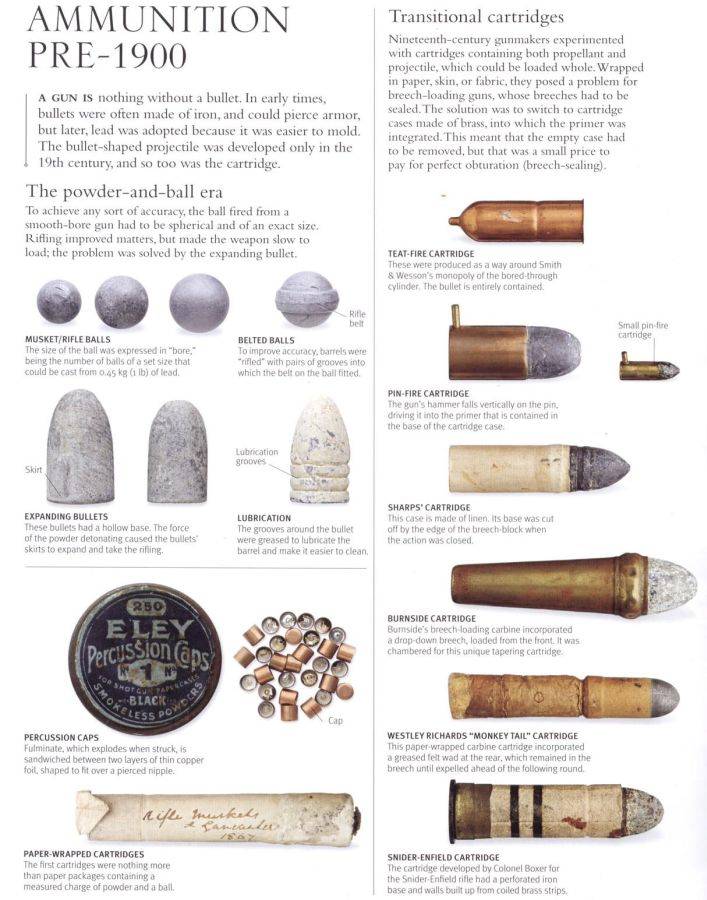
But what kind of cartridges did people not think up before they settled on well-known samples of all of us.
All this caused the most genuine revolution in the field of small arms, which resulted in a massive re-equipment of all the armies of the world with new rifles and pistols. And they took a lot of reliable, cheap and effective cartridges. In addition, they also needed equally cheap, reliable and effective primers and ... did anyone develop all this?
Here, for example, Maynard's 52-caliber cartridge. The most common seemingly welded cartridge. But where is the cap? And there is no cap! There is a “hole”, filled with wax and a cap on a brand-tube, worn separately through a hole in the bottom and set fire to gunpowder in a cartridge.
Well - their names are also known and directly related to the development of very many images of small arms from the middle to the second half of the nineteenth century. And the first among the developers of caps and cartridges should be called the American inventor Hiram Berdan from New York, who patented his first version of the 20 capsule in March of 1866 (US patent number XXUMX).
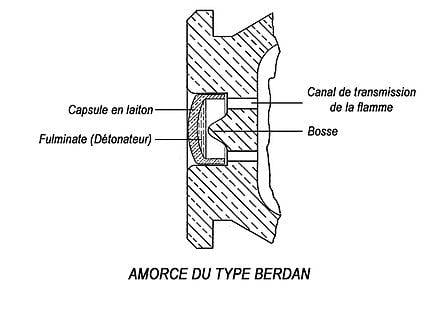
Device cap Berdan
The primer of Berdan was a small copper cylinder that was inserted into the hole in the bottom of the cartridge directly opposite the bullet. In this recess of the cartridge, under the cap, two small holes were made, as well as a small nipple-like protrusion (later known as the anvil). When fired, the striker striker hit Berdan’s primer in such a way that the initiating compound in it touched the anvil, ignited itself and ignited the powder charge inside the liner. This system worked well, allowing the cartridge to be recharged for reuse. Difficulties arose when using copper shells, which were oxidized, which prevented the insertion of primers in their nests. Berdan decided it was time to switch to brass sleeves and further improved the installation process of the capsule into the sleeve, which was noted in his second patent from September 29 1869 of the year (US patent 82587). These solutions have been so successful that they have remained almost as functional to this day.
True, Berdan's cap is difficult to remove from the socket at the bottom of the sleeve without damaging the anvil. Nevertheless, its primer is used by almost all armed forces, and by most civilian manufacturers (with the exception of those that are in the United States).
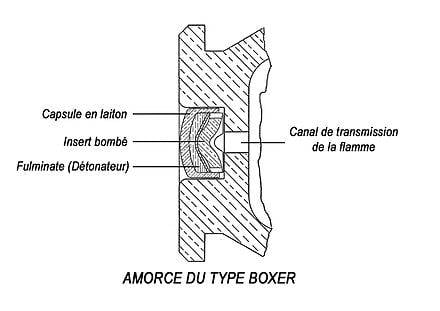
The device caps Boxer.
Almost simultaneously with Hiram Berdan, Englishman Edward M. Boxer from Royal Arsenal in Woolwich also worked on a similar primer design, which he patented in England 13 of October 1866 in England, and then received US patent 29 of June 1869 of the year #91818.
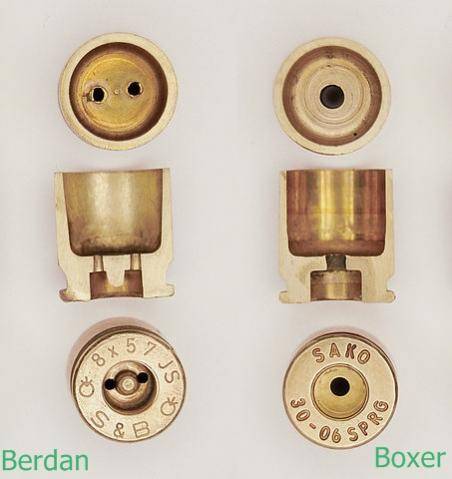
Difference of nests for boxers of Boxer and Berdan.
Boxing caps are similar to Berdan caps (and could it have been otherwise with such utilitarian devices?), But with one very significant addition regarding the location of the anvil. In a boxing cap, the anvil is a separate piece that is inside the capsule itself. In the slot for the primer at the bottom of the cartridge case of the Boxer cartridge there is one large hole for igniting the charge, located in the center. The benefit of this is that used cartridges are easier to recharge. It is enough to knock out the used capsule with a thin metal rod. Then a new capsule is inserted into the nest, and gunpowder is poured into the cartridge case, followed by a bullet. This technology is very popular in the USA and contributes to the fact that there are a large number of shooters who reload their ammunition themselves.
Caps for ammunition for a smooth-bore hunting weapon: "centrifugal" (left) and "Zhevelo" (right).
Capsules "boxers" are somewhat more difficult to manufacture, as they contain not only the charge, but also the anvil. But the automatic equipment producing caps by the hundreds of millions eliminated this problem. On the other hand, although the Boxer cap is harder, the sleeves themselves are easier for such caps! With the Berdanovsky cap everything is the opposite: the cap itself is simpler, but the sleeves are more complicated! For those users who reload their cartridges on their own, a small increase in the initial cost is more than offset by a decrease in the cost of reloading, which can save up to 85-90% compared to buying new factory cartridges.
As a matter of fact, the Boxer cap is well known to the hunters of the “Zhevelo” cap, except for the absence positioning them in the welt's nest. And so the caps of both Berdan and Boxer are indistinguishable in form and do not differ on the assembled cartridges of the same caliber and size.
US Patent No. 52818 for the 1866 Boxer Metal Chuck
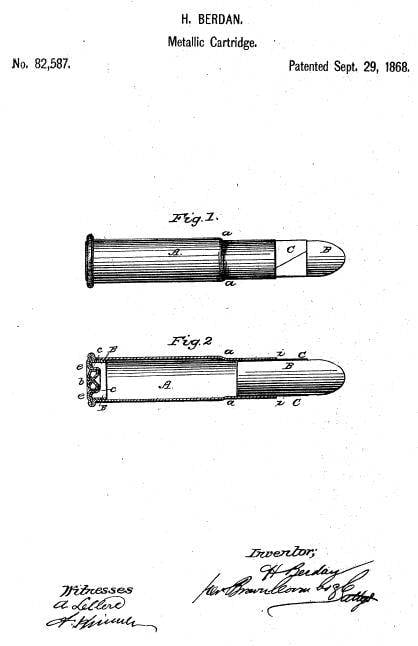
US Patent No. 82587 for Berdan 1866 Metal Chuck
Having developed successful primers, Berdan and Boxer took up the ammunition. Although it would be more correct to say that both the primers and the cartridges were developed by them simultaneously. So, Edward Boxer developed a .577 caliber cartridge (14.66-mm) for Jacob Snyder's rifle, adopted in England in September 1866, under the designation "Snyder-Enfield Mk I".
US Patent No. 91818 for the 1869 Boxer Metal Chuck
The cartridge, in our opinion today, had a rather complicated structure and consisted of a sleeve rolled from a sheet of brass in two turns and then wrapped with paper outside. The back end of the sleeve had a bend inside and was inserted into the brass “cup”, and that in turn was inserted into another, even more durable, brass “cup”. Inside the cartridge case there was a folder tray with a through central channel into which a brass cap for the capsule was inserted, and it passed through the disc bottom of the cartridge case, beyond the edge of which the extractor extracted all “this” when removed from the chamber. Interestingly, this disc could not be brass, but could be ... iron! That is, this cap is the basis for assembling four parts at once: the bottom of the sleeve, two brass cups and the folder tray, and he put them all together. Now, having gathered all these parts together, gunpowder was poured into the cartridge case, a prodelnik of wax was inserted; a lead, stamped bullet with a groove near the bottom, into which the shell walls were pressed; then the front part of the sleeve was slightly crimped around the bullet.
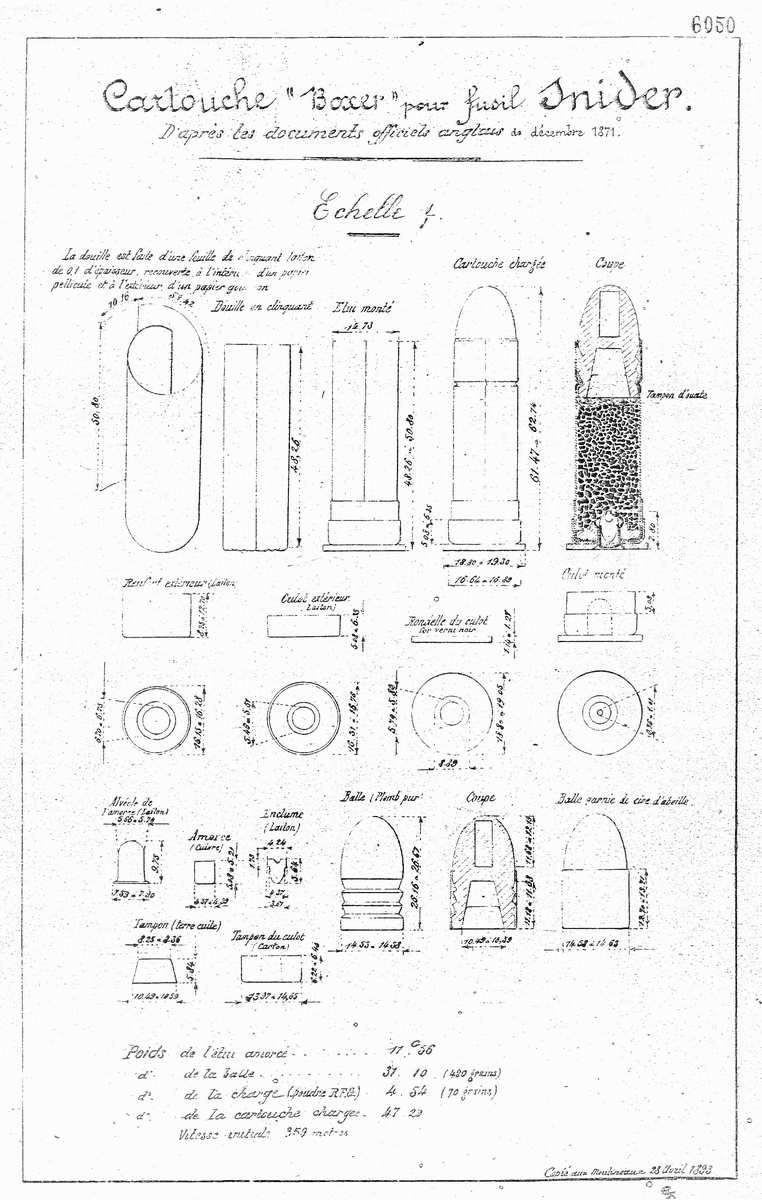
Boxer cartridge for Sniper rifle caliber .577.
English description of the Snyder .577 rifle and cartridges for it.
Obviously, such a design was unnecessarily complex and required high precision manufacturing with minimum tolerances, since the cartridge was assembled “in tension”. Therefore, already in 1871, the .577 “Snyder” cartridge together with the Snyder-Enfield rifle were removed from service. Another boxer cartridge .577 / .450 "Martini-Henry" under the "Martini-Henry" M 1871 caliber 11,43-mm came to replace them. At the same time, the .577 / .450 cartridge from the old .577 was only different in that it was obtained by crimping the top of the sleeve to the .450 caliber, and even lost its previous paper “wrapper”.

Cartridge .577 "Snider".

In the 80-s of the XIX century .577 cartridge Snyder underwent a major modernization - a sleeveless sleeve-shaped sleeve was obtained. This cartridge has become known under the designation: .577 Snider Solid Case.
However, the release of .577 cartridges for Snyder guns was carried out before the 20s of the 20th century. The fact is that these England actively sold rifles to Turkey, China and other "eastern countries" and even to island islands of the Pacific islands! In the royal police of Ireland, they were used until the 1890s, in India until the 1920s, and in some places in the countries of North-East Africa and in the Middle East this weapon was used even in the mid-twentieth century.
Picture from p. 67 of the book “Firearms” M .: Avanta +, Astrel, 2007. Very well and clearly shows the characteristics of the above patron Edward Boxer.

The appearance of the cartridge Berdan.

The device cartridge Berdan.
As for the patron Hiram Berdan, he was repeatedly described in our domestic literature, including the color of pink and white pieces of paper, depending on his mission to the rifle, or to the carbine, so it is almost impossible to add something new to this.
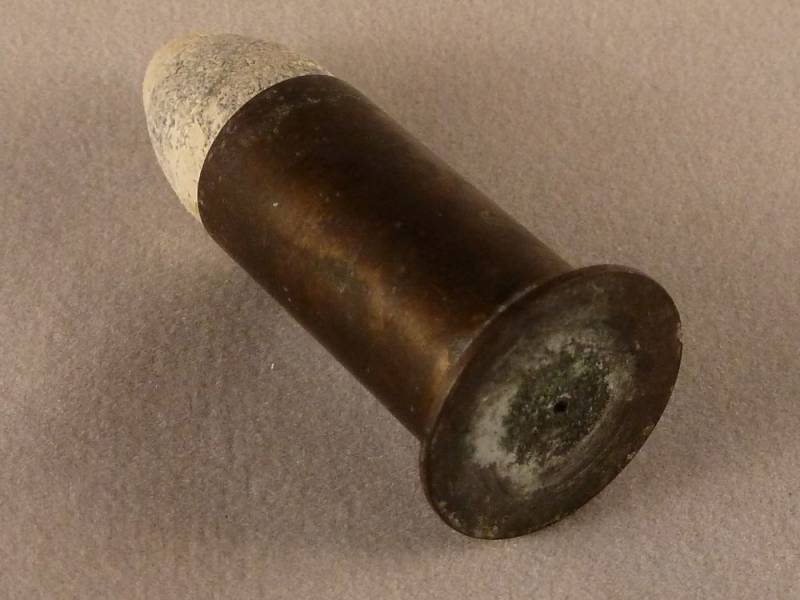
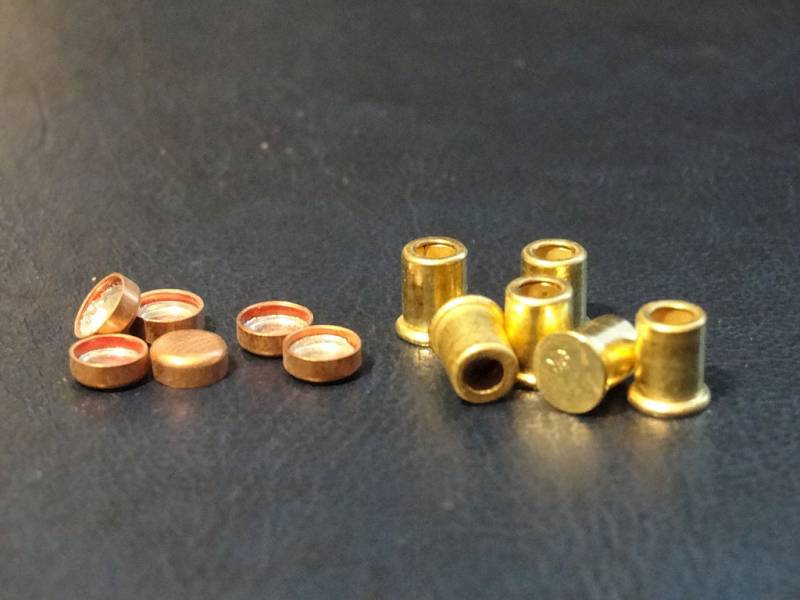
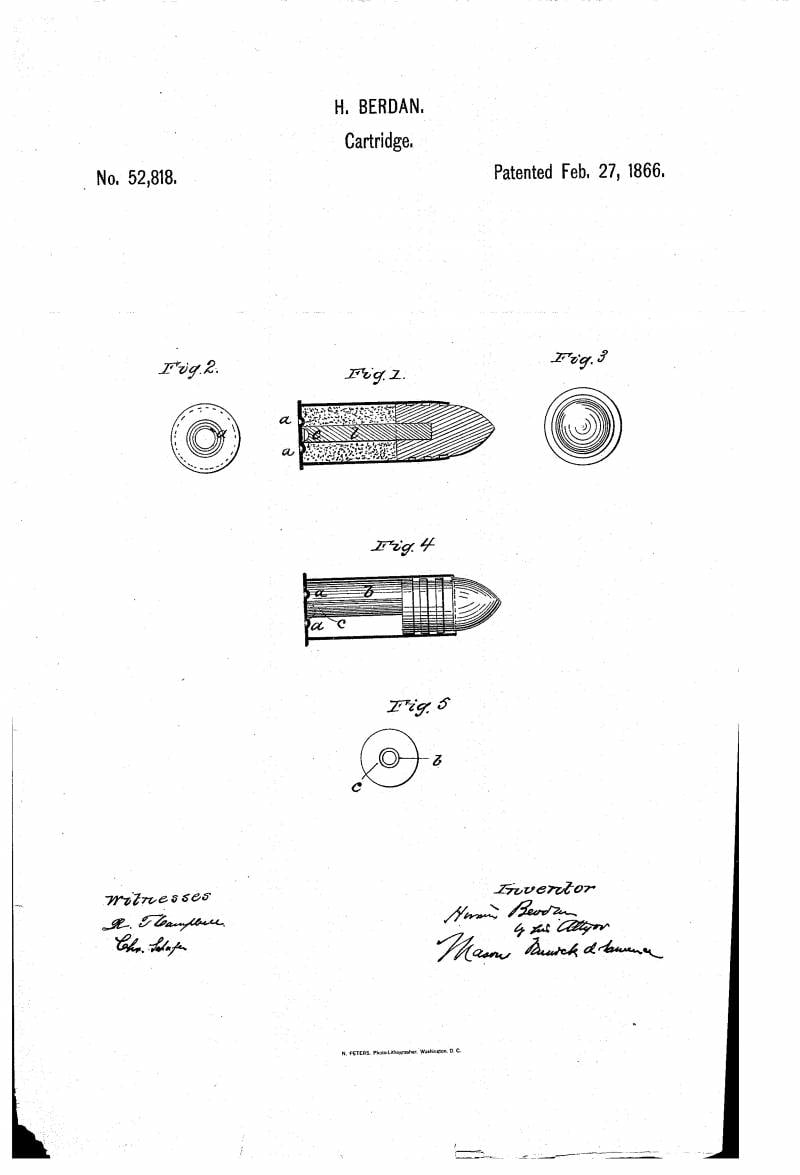
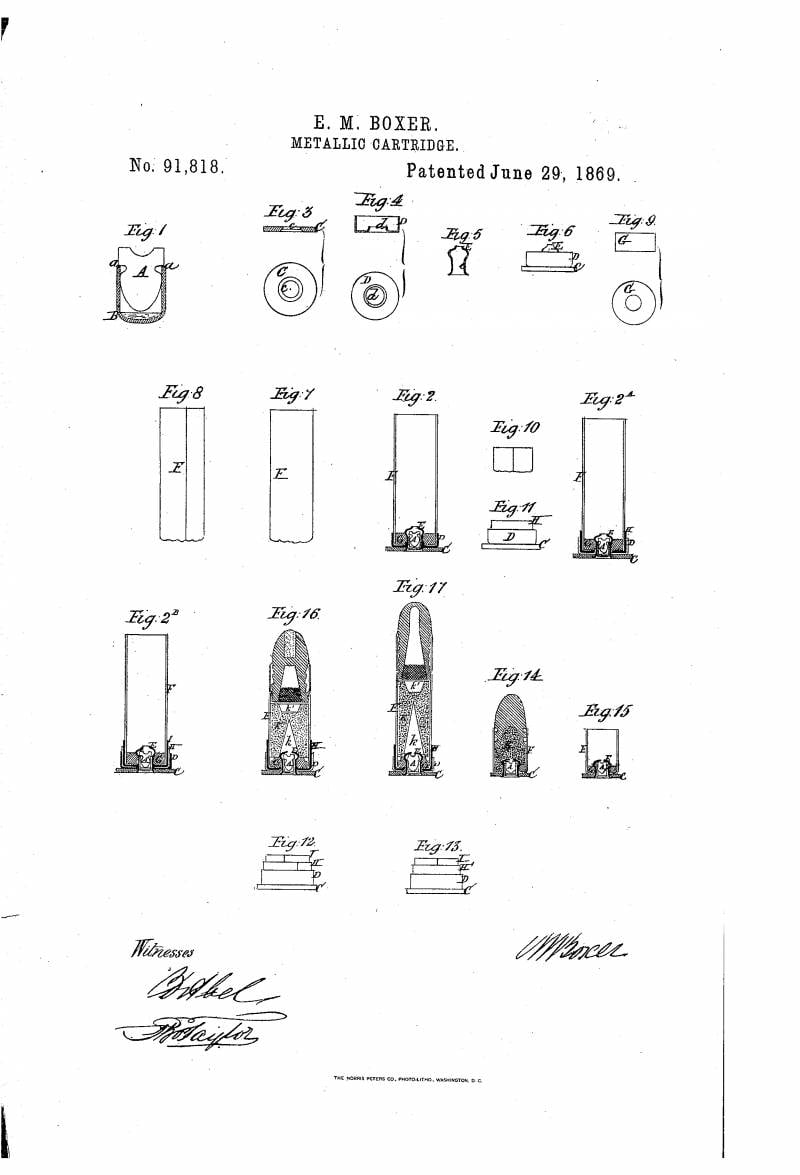
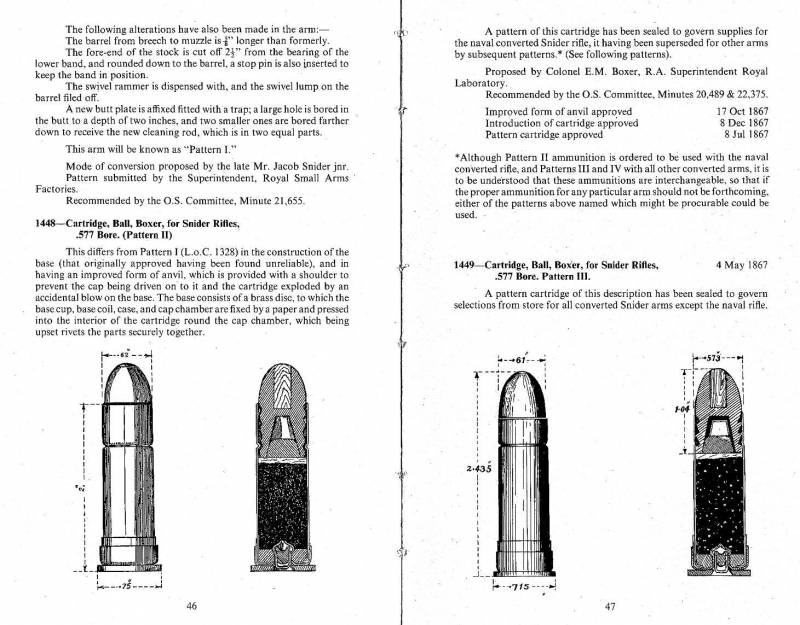
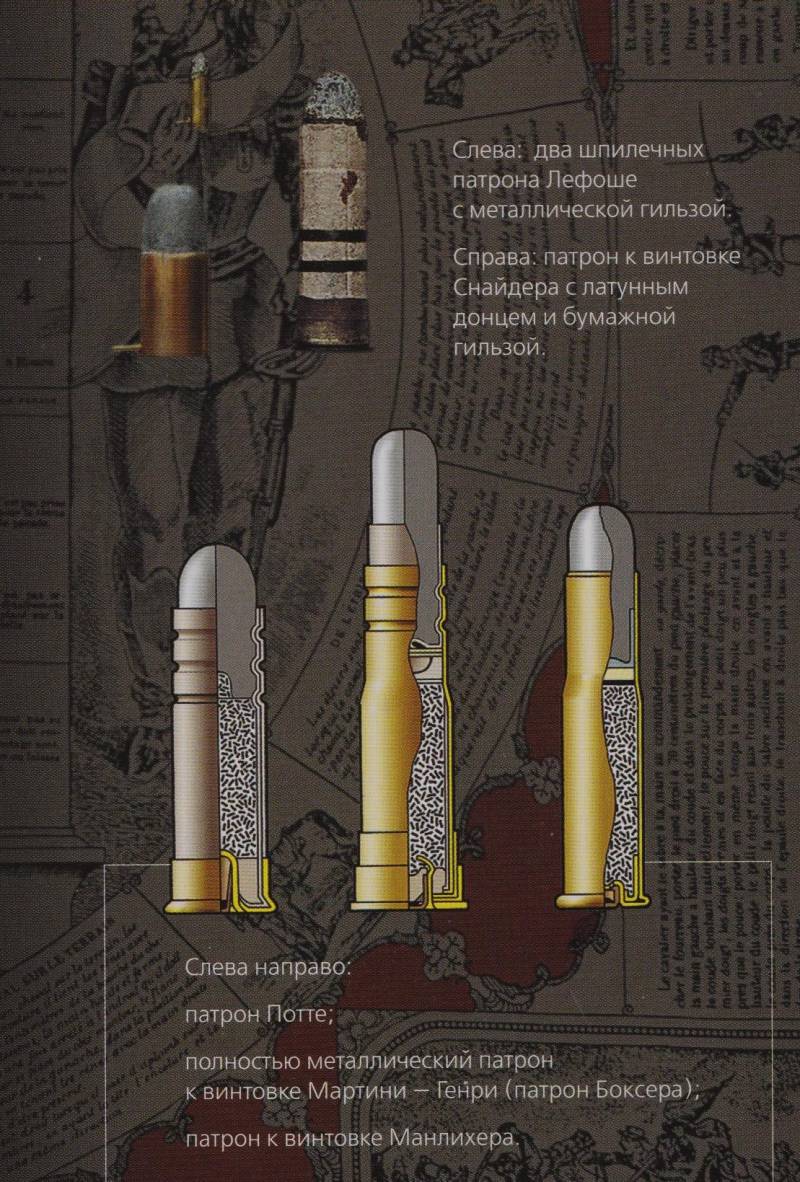
Information